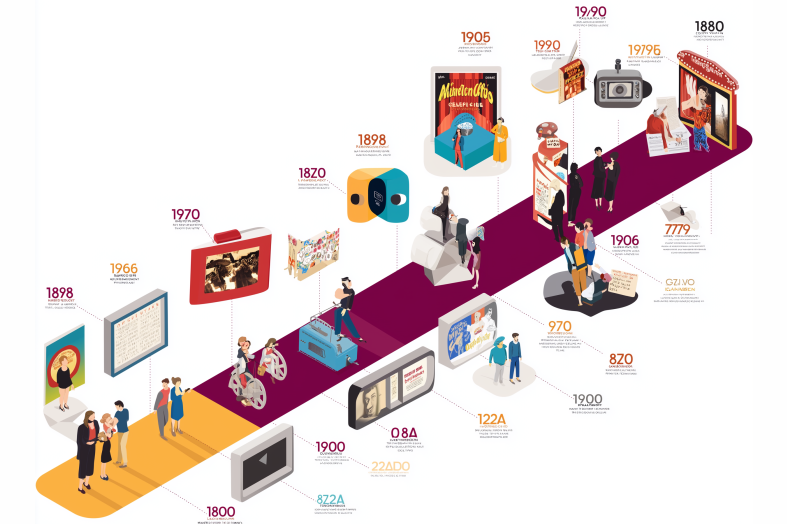In the world of business, it’s easy to get lost in the noise of new and emerging startups with fresh ideas. But some brands, with decades or even centuries of history, have continued to thrive by reinventing themselves time and time again. These legacy brands didn’t just survive the ever-changing marketplace—they have become cultural icons, deeply intertwined with the fabric of society. The secret behind their success is their ability to stay relevant, adapt to evolving consumer needs, and most importantly, tell a story that resonates across generations.
As business owners, marketers, and brand strategists, the stories of these brands provide valuable lessons on how to maintain relevance while embracing change. But what exactly makes these legacy brands so resilient? How do they pivot, modernize, and reshape their identities without losing their core essence?
To answer these questions, we look at three iconic brands—Tata, LEGO, and Burberry—and explore how they have navigated their journeys from legacy status to becoming cultural symbols in the modern world. By examining their evolution, branding strategies, and digital reinvention efforts, we can uncover the playbook that has allowed them to endure and thrive.
The Tata Story: A Legacy of Innovation
Tata, one of India’s oldest and most respected conglomerates, was founded in the late 19th century by Jamsetji Tata. Since then, the brand has been associated with innovation, trust, and a commitment to nation-building. The Tata name evokes images of giant steel plants, sprawling automobile factories, and a legacy that has shaped the Indian economy. However, in an increasingly globalized and competitive marketplace, Tata knew that it had to evolve in order to remain relevant.
In the early 2000s, under the leadership of Ratan Tata, the brand underwent a significant transformation. The Tata Group moved beyond its traditional business verticals and sought to make its mark in sectors such as technology, retail, and hospitality. One of the most significant steps in this reinvention was the acquisition of Jaguar Land Rover, a British luxury car brand that helped propel Tata into the global spotlight.
But Tata’s transformation didn’t stop with acquisitions. The brand began to invest heavily in sustainable business practices, positioning itself as a pioneer in eco-friendly innovations. For example, Tata Motors introduced the world’s most affordable car, the Nano, which, despite its initial failure, showed the world Tata’s commitment to challenging conventions. Furthermore, the Tata Consultancy Services (TCS) has become one of the world’s most valuable IT services companies, making the Tata name synonymous with technology-driven progress.
Tata’s success lies in its ability to combine traditional values with modern innovation, making it a brand that speaks to both heritage and the future. By emphasizing its roots in India while embracing global opportunities, Tata has been able to strike the perfect balance between tradition and innovation.
LEGO: A Toy Brand Reimagined
LEGO, the iconic Danish toy brand, has a rich history dating back to 1932, founded by Ole Kirk Christiansen. Known for its colorful, interlocking plastic bricks, LEGO became a staple of childhood play for generations. But by the early 2000s, the brand was facing a crisis. Sales were stagnating, and competitors had gained ground in the toy market. The question was: how could LEGO reclaim its place in the hearts and minds of children around the world?
The answer lay in reinventing the brand experience while staying true to its core values. LEGO’s strategy was not just about creating new products but about creating an entire universe where imagination, creativity, and play could come to life. The first major step in this journey was the introduction of the LEGO Movie in 2014, which turned the brand into a pop-culture phenomenon. The film made LEGO a part of the global cultural conversation, generating new audiences beyond just children to include teens and adults.
LEGO also embraced the world of digital play by partnering with video games, creating apps, and launching LEGO Robotics, which merged play with education. Its foray into the digital world, combined with its nostalgic connection to childhood, allowed LEGO to stay relevant to both younger generations and adult fans. By embracing the digital space without abandoning its physical product, LEGO evolved into a multimedia brand that transcended its roots.
Beyond product innovation, LEGO also demonstrated the power of brand storytelling. Through its collaborations with iconic franchises like Star Wars and Harry Potter, LEGO was able to create a deeper emotional connection with its audience. The LEGO brand story wasn’t just about building toys; it was about building worlds, sparking creativity, and bringing stories to life in ways that engaged both kids and adults.
Burberry: From British Heritage to Global Luxury
Burberry, the British luxury fashion brand founded in 1856 by Thomas Burberry, has a long and storied history of dressing the British elite. Famous for its signature checkered pattern and classic trench coats, Burberry was for decades synonymous with British upper-class style. However, by the early 2000s, Burberry found itself at a crossroads. The brand had begun to lose its luster, and its iconic trench coat was no longer a symbol of luxury but of stagnation.
In 2006, Burberry appointed Angela Ahrendts as CEO, and under her leadership, the brand set about reinventing itself. Ahrendts recognized that Burberry had to bridge the gap between its heritage and the fast-paced world of fashion. The brand embraced digital innovation, becoming one of the first luxury brands to stream its runway shows live. This digital-first approach was revolutionary in an industry that had historically been focused on exclusivity and secrecy.
Burberry also understood the importance of engaging the younger consumer. The brand shifted its focus to creating a more accessible luxury product by introducing a mix of traditional high-end fashion with street-style elements. The result was a more youthful, vibrant image that appealed to a new generation of consumers. Through social media engagement and influencer collaborations, Burberry became one of the first luxury brands to successfully tap into the power of digital storytelling.
But Burberry’s reinvention didn’t just stop at digital. The brand also refocused on its core product offerings, reintroducing its iconic trench coat and tartan patterns, while adding a fresh, modern twist. By balancing tradition with contemporary design and leveraging digital platforms to tell its story, Burberry not only regained its position as a global luxury brand but also redefined the very meaning of heritage in the fashion world.











